Groundwater Scarcity, Pollution Set India on Perilous Course
Drained and contaminated aquifers contribute to India’s “worst water crisis.”
Drained and contaminated aquifers contribute to India’s “worst water crisis.”
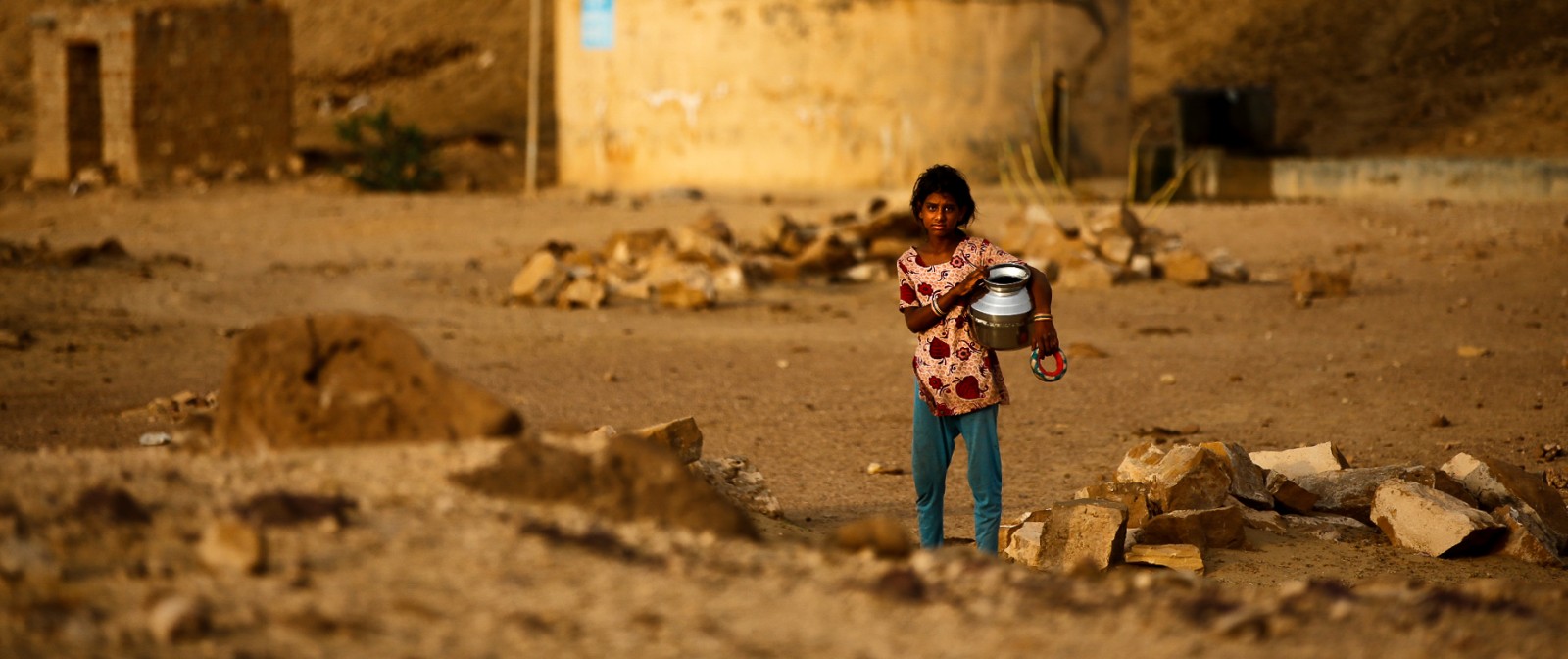
By Keith Schneider, Circle of Blue, December 4, 2018
Photographs © J. Carl Ganter / Circle of Blue
Doula Village lies 55 kilometers (34 miles) northeast of New Delhi on a flat expanse of Uttar Pradesh farmland close to the Hindon River. Until the 1980s Doula Village’s residents, then numbering 7,000, and its farmers and grain merchants, thrived on land that yielded ample harvests of rice, millet, and mung beans. The bounty was irrigated with clean water transported directly from the river, or with the sweet groundwater drawn from shallow wells 7 meters (23 feet) deep.
Dirty aquifers and water scarcity are destabilizing the world’s second-largest country and seventh-largest economy.
That seems a lifetime ago for Krishan Pal Singh. Born and raised in Doula Village, Singh sighs when he explains what happened in the decades since. One of the region’s active environmentalists, Singh says he is an eyewitness to the industrial development near the Hindon River that polluted one of India’s grand waterways, then drained and contaminated the region’s freshwater aquifers. Life in a rural India village that now counts over 15,000 residents has grown arduous and perilous.
Doula Village’s unstable state is caused by decades of three converging trends: polluting industrial development, ambitious agricultural production, and grave hydrological mismanagement. The very same trends in thousands of rural communities have produced an economic and environmental crisis that is now endemic to India.
From the rice paddies and sugar cane fields of Punjab, in northwest India, to the coconut groves and rice paddies in Tamil Nadu, the country’s southernmost state, and in almost every state in between, water pollution and the effect it has on supply have combined to produce a freshwater calamity. Dirty aquifers and water scarcity are destabilizing the world’s second-largest country and seventh-largest economy. As its water reserves get dirtier and smaller, India is losing the capacity to safeguard public health, ensure farm productivity, grow the economy, and secure social stability.
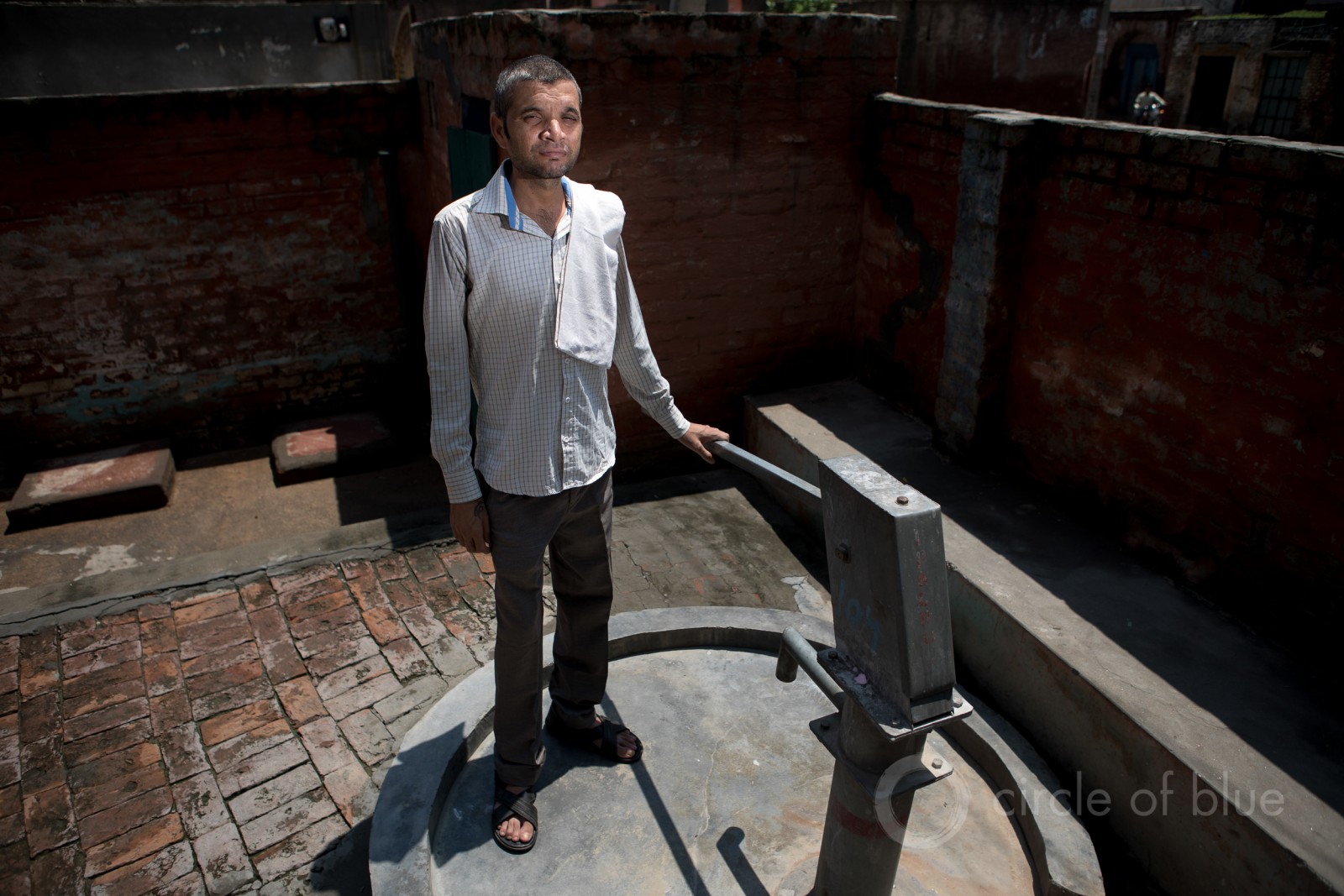
Wells, including this one, are going dry in Doula, a village 55 kilometers (34 miles) northeast of New Delhi. Doula and many regions in India are facing a groundwater emergency triggered in part by thirsty industries, intensely irrigated agriculture, and hydrological mismanagement. © J. Carl Ganter / Circle of Blue
The basic data points collected by the Indian government, and no longer veiled from public view, illustrate the widening emergency. India uses or consumes more than 600 billion cubic meters (158 trillion gallons) of water annually. Of that amount, 245 billion cubic meters are drawn from aquifers. India is more dependent on water pumped from aquifers than any other nation
India is more dependent on water pumped from aquifers than any other nation — it accounts for about a quarter of global demand for groundwater, according to the World Bank. More than 90 percent of groundwater in India is used for irrigated agriculture. The remainder — 24 billion cubic meters — supplies 85 percent of the country’s drinking water. Roughly 80 percent of India’s 1.35 billion residents depend on groundwater for both drinking and irrigation.
The waters of the Hindon River, a tributary of the Yamuna River once so vital to raising crops, are too polluted with chlorinated compounds, bacteria, and heavy metals to safely use for agriculture. The condition of groundwater is just as treacherous. State health authorities have declared that Doula Village’s drinking water aquifers — tapped by 60-meter-deep wells and contaminated by arsenic, nitrate, fluoride, and metals — are unfit for human consumption.
Residents, and school children attending Doula Village’s primary Paatshaola No.1 school have few options for fresh water. Neither the village, the state, nor the national government have dug into their treasuries to drill a much more expensive 150-meter well to reach a clean aquifer.
A shocking percentage of India’s water is filthy. According to the latest assessment by the National Institution for Transforming India (NITI), a government-run think tank, nearly 70 percent of all of the country’s fresh water — in the ground or on the surface — is contaminated. India’s rivers, lakes, and aquifers are more polluted than the waters of any other major nation.
Drought and overconsumption also have drained India’s freshwater reservoirs, which are lower than they’ve ever been. The NITI report, released by Nitin Gadkari, Minister of Water Resources, River Development and Ganga Rejuvenation, said India was snared in “the worst water crisis” in its history. The report found that at least 600 million Indians — almost half the country — contend with high or extreme water stress. And 200,000 Indians die every year because they are drinking, washing, and bathing in contaminated water.
The “worst water crisis” doesn’t stop there. Drought and wasteful pumping is drying up aquifers that supply more than 30 million water wells across India, many of them used for irrigation. Government studies show at least a third of India’s groundwater reserves are being pumped at much faster rates than they are being recharged by rainfall. Moreover, said a 2014 World Bank study, “aquifers are depleting in the most populated and economically productive areas. Climate change will further strain groundwater resources.”
The authors of the study added: “This will have serious implications for the sustainability of agriculture, long-term food security, livelihoods, and economic growth. It is estimated that over a quarter of the country’s harvest will be at risk.”
Even in the diminishing number of regions where groundwater supplies are still adequate for drinking and irrigation, most aquifers are contaminated, according to India’s Central Ground Water Board and state groundwater authorities. Three quarters of India’s groundwater supplies contain fluoride at levels in much higher concentrations than World Health Organization safety limits. Aquifers beneath 387 of India’s 676 geographic regions also contain hazardous concentrations of one or more of these other contaminants – pesticides, arsenic, chromium, lead, cadmium, and nitrates.
With no access to adequate supplies of well water — clean or polluted — and no money to dig deeper wells, many farmers in important agricultural districts turn to the only other available source of water: raw or slightly treated discharges from sewage pipes and treatment plants.
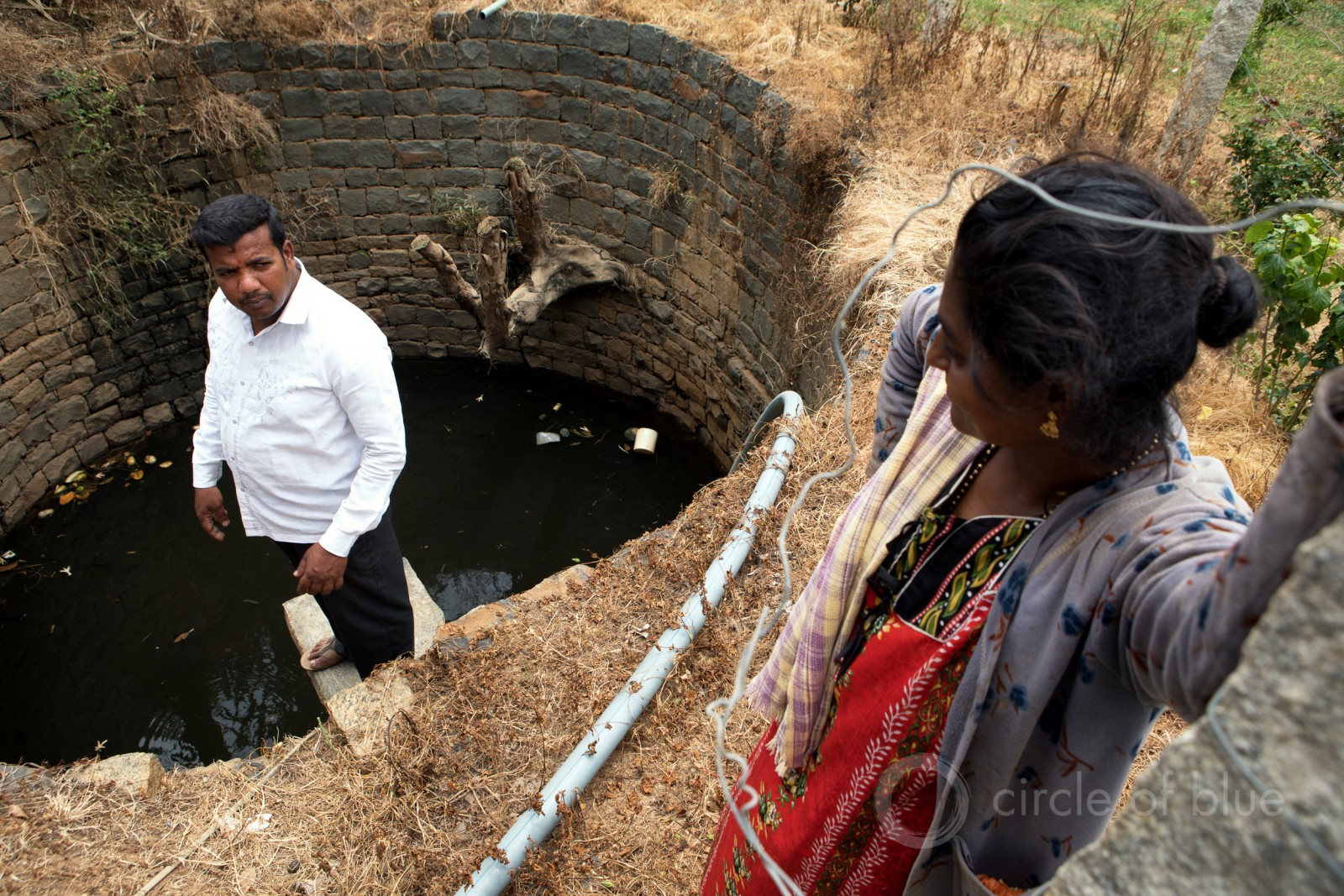
Mrs. Padma, a farmer near Mugular Village, visits one of her wells that supplies irrigation water for her crops of grapes. As aquifers are dropping, she now mixes raw sewage with water from the well. Photo & copy; J. Carl Ganter / Circle of Blue
Mrs. Padma is a farmer in Mugular Village. She described how her wells, each 106 meters deep, went dry because the area’s aquifer was over-pumped by all the farmers dependent on it.
Farmers do not pay for the two most important resources in Indian agriculture: water or electricity to power well pumps. India water law also gives landowners the right to use as much of the water beneath their land as they want without any regulation or control.
Free water and electricity, and unsupervised and unlimited consumption, led inexorably to the reality that Mrs. Padma contends with now. Even a 228-meter well is almost dry. The trickle produced by that well is not sufficient to provide the 1,200 liters per hour (320 gallons) that she needs to water her crops.
In a desperate move, she now pumps lightly treated wastewater that fills a reservoir established by the city of Bengaluru, a tech hub of more than 12 million people. The holding tank is six kilometers from her four-acre farm. Bengaluru, wracked by years of severe drought and sharp increases in population, is filling 26 small reservoirs with sewage wastewater to ease pressure on its drying rivers, and to provide at least some moisture to the region’s farmers.
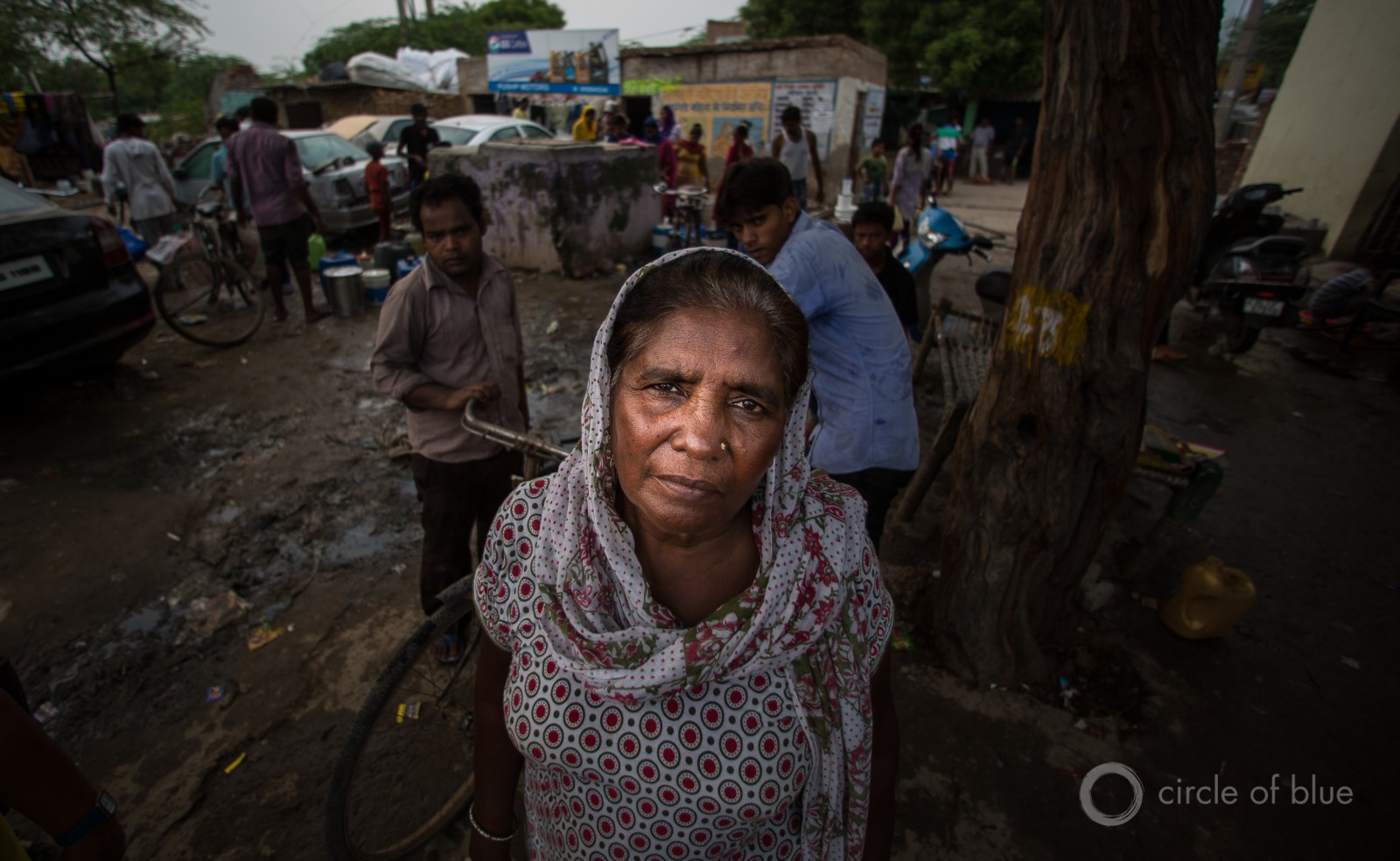
Vasant Kunj, Delhi. Photo © J. Carl Ganter/Circle of Blue
Bengaluru, formerly called Bangalore, cannot wait long to act. Groundwater scarcity has public officials talking about a “Day Zero” scenario when the city could run dry. Cape Town, South Africa popularized that term as it faced severe drought and water scarcity over the last several years.
The India office of the World Resources Institute, a Washington-based think tank, projects a water supply emergency for Bengaluru if “current water supply-demand practices do not improve significantly.”
“Critical ground water resources that account for 40 percent of India’s water supply are being depleted at unsustainable rates.” -NITI
A separate study by NITI found that as recently as 2012 groundwater in Bengaluru could be found a few hundred feet below the surface. Today it is 1,500 feet. Much of it also is contaminated by industrial effluent and sewage that seep into the ground.
The approaching crisis in Bengaluru is caused by the sharp reduction in moisture to recharge the city’s aquifers. Population growth, drought, and wasteful water use has utterly changed access to sufficient water in a city that not long ago was known for its thousand lakes.
NITI also studied New Delhi’s groundwater supply and found it just as seriously depleted. In its report released in June, NITI researchers warned that India’s capital city of more than 20 million residents is on colliding paths of increasing consumption and scarcer moisture so unyielding that it could run out of groundwater within two years.
“Critical ground water resources that account for 40 percent of India’s water supply are being depleted at unsustainable rates,” said NITI analysts.
In the days after the study’s release Indian newspapers reported that in spite of NITI’s warning Delhi residents continued to waste water — washing cars, overwatering gardens, and letting home water tanks overflow.
In Doula Village, meanwhile, the mood is growing despondent. Unless they can afford water from tankers, or purchase reverse osmosis water filters for their home faucets, residents are forced to “shop at the bazaar of diseases causing cancer, hepatitis, asthma and even cows dying,” said Krishan Pal Singh. “Cancer rates started to rise about 10 years ago.”
Dirty water, in sum, is weakening Doula Village. As the waters grew cloudy and dangerous, so did the village’s prospects, Singh said. “We turned from the Land of Gods, with the best food and water, with the most fertile land, to the worst part of India with poor people. The water moved from providing life to taking lives.”
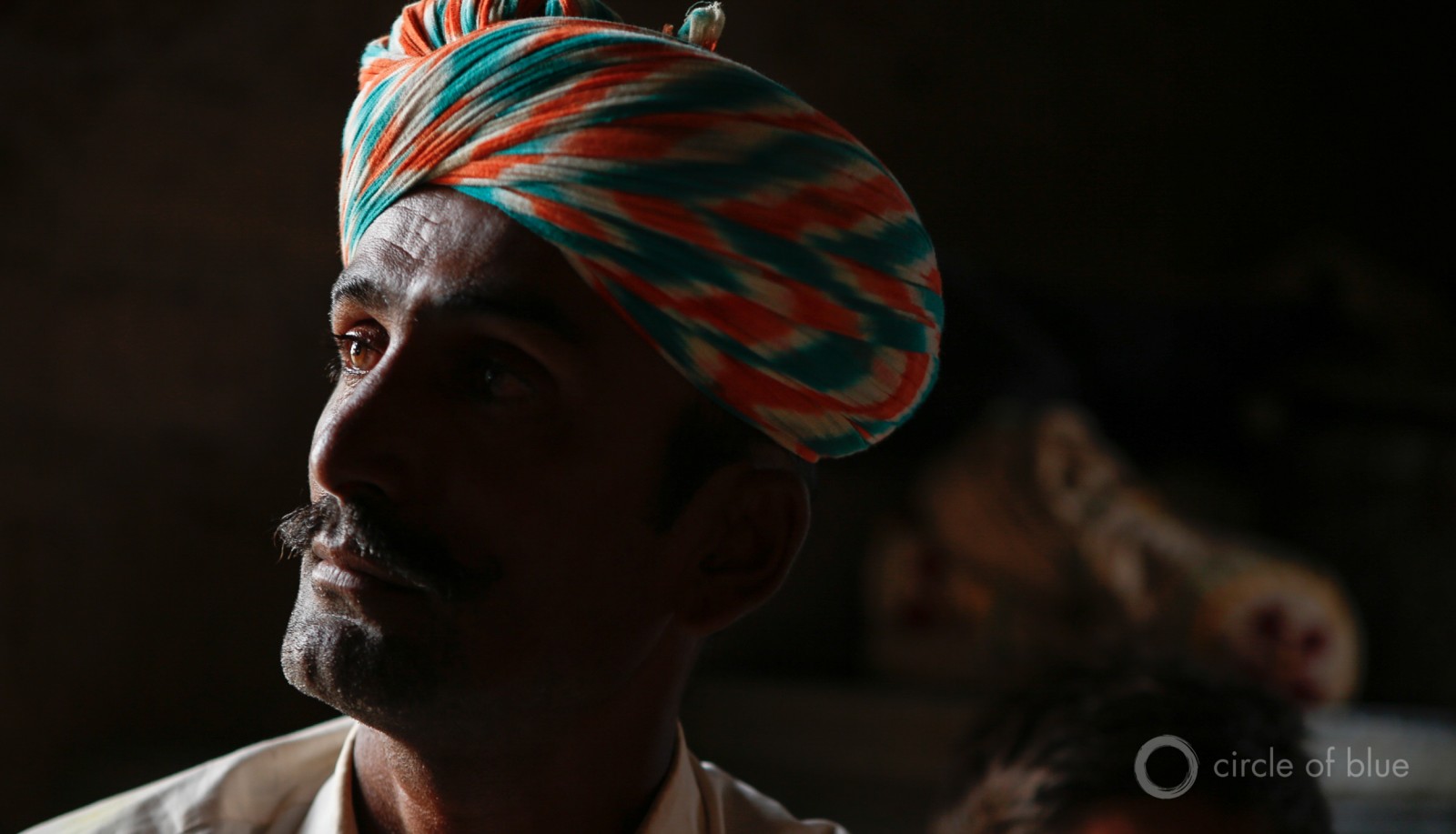
Ganwar Kahn describes how his brother became disoriented and lost in the Thar Desert in northwestern India and died of dehydration. (See video.) Photo © J. Carl Ganter / Circle of Blue
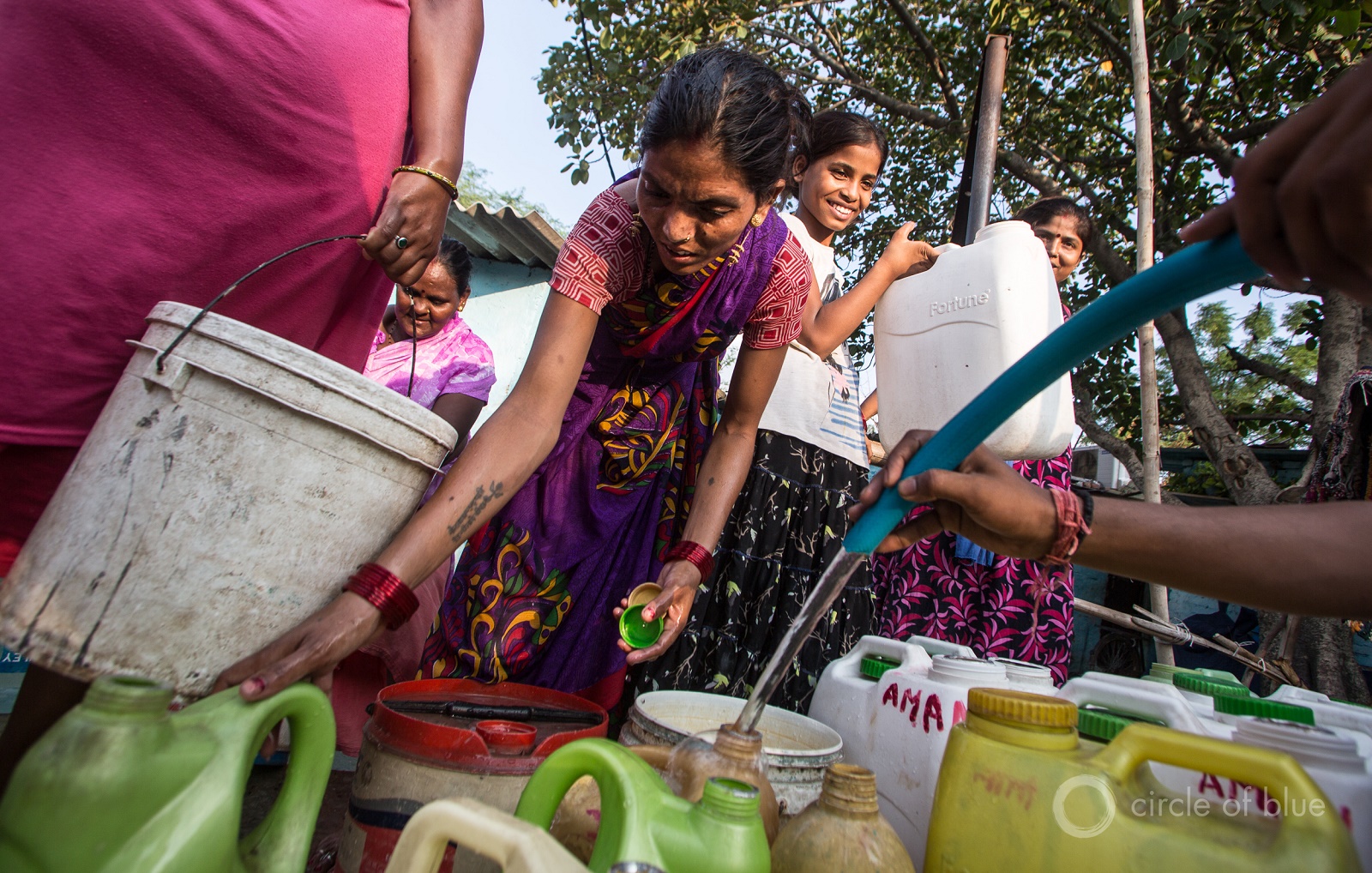
Women in Delhi wait for water at a tap that runs for two hours each day — one hour in the morning and one in the evening. Photo © J. Carl Ganter / Circle of Blue
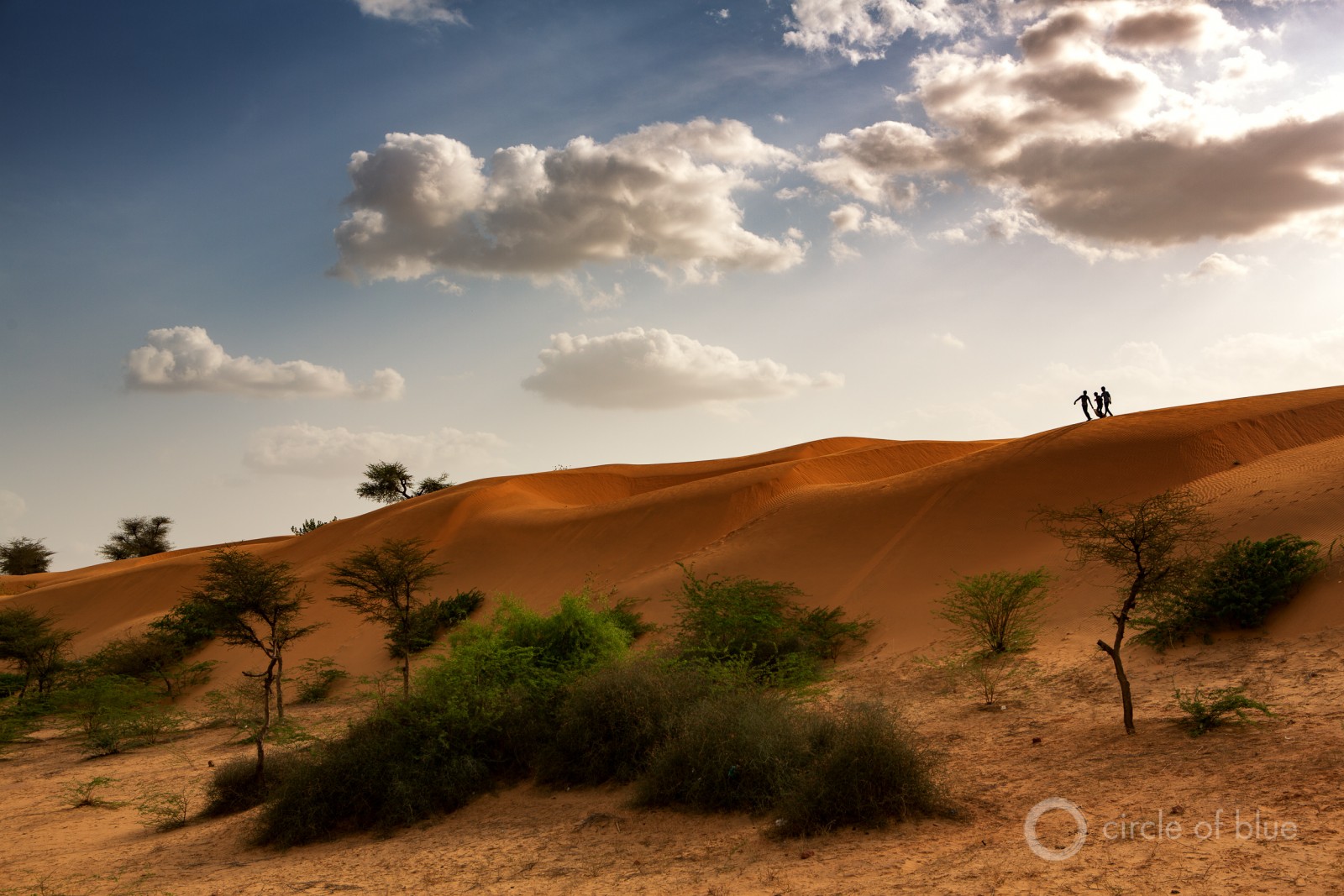
Children play atop sweeping sand dunes in the Thar Desert between Jodhpur and Jaisalmer, India. © J. Carl Ganter / Circle of Blue
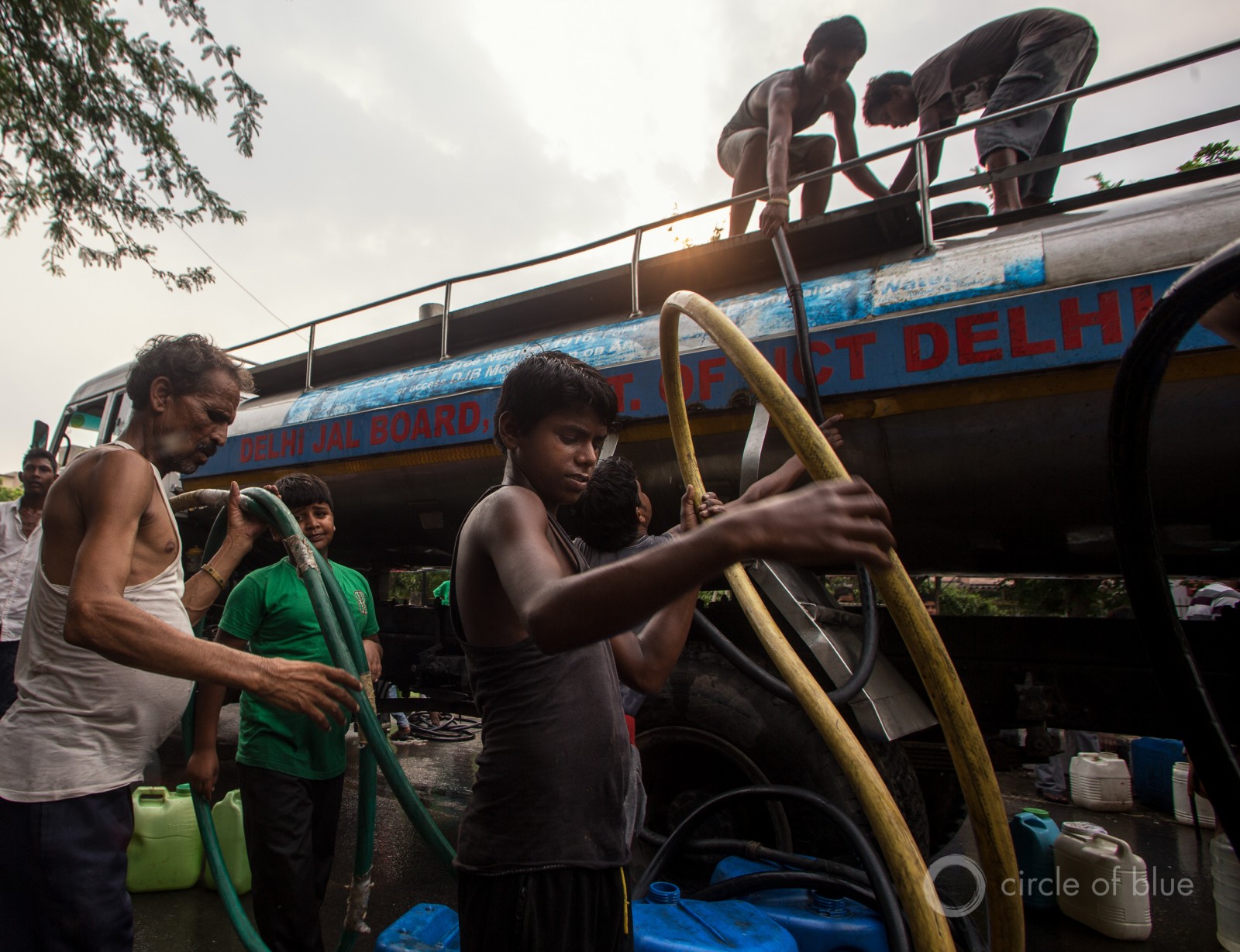
Residents of Vasant Kunj, a poor neighborhood in Delhi, rely on tanker trucks for their daily supply of water for drinking and bathing. © J. Carl Ganter / Circle of Blue

Toxic foam flows from Bellandur Lake near Bengaluru, India. While its surface water is contaminated, groundwater scarcity has prompted public officials to warn about a “Day Zero” scenario when the city could run dry. © J. Carl Ganter / Circle of Blue

Where every drop of water counts for livestock and people, a young Merasi girl milks her family’s goat in the Thar Desert of northwest India. © J. Carl Ganter / Circle of Blue
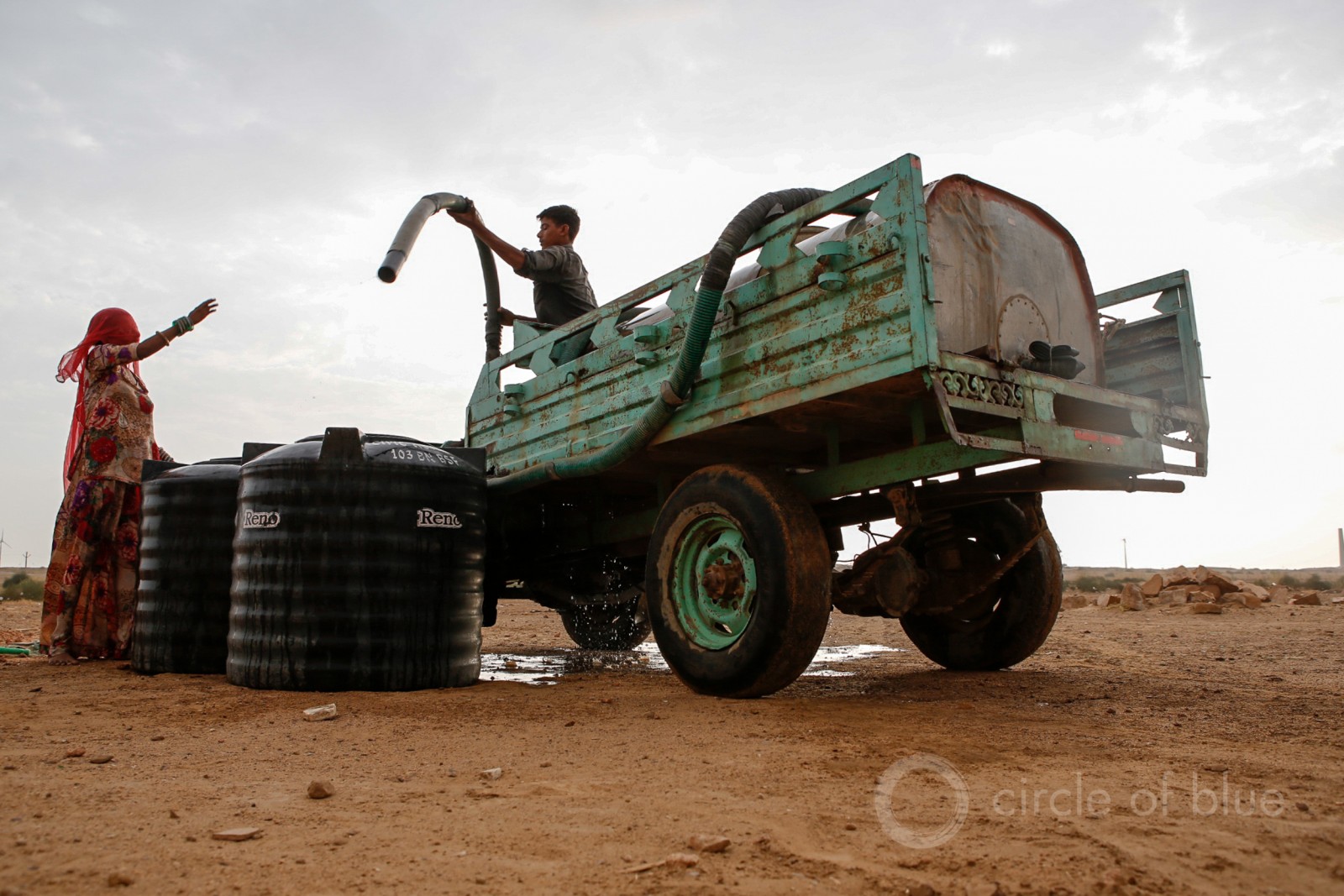
Where water is scarce, some inhabitants of India’s Thar Desert rely on irregular deliveries of water to plastic tanks alongside their modest mud-brick homes. © J. Carl Ganter / Circle of Blue
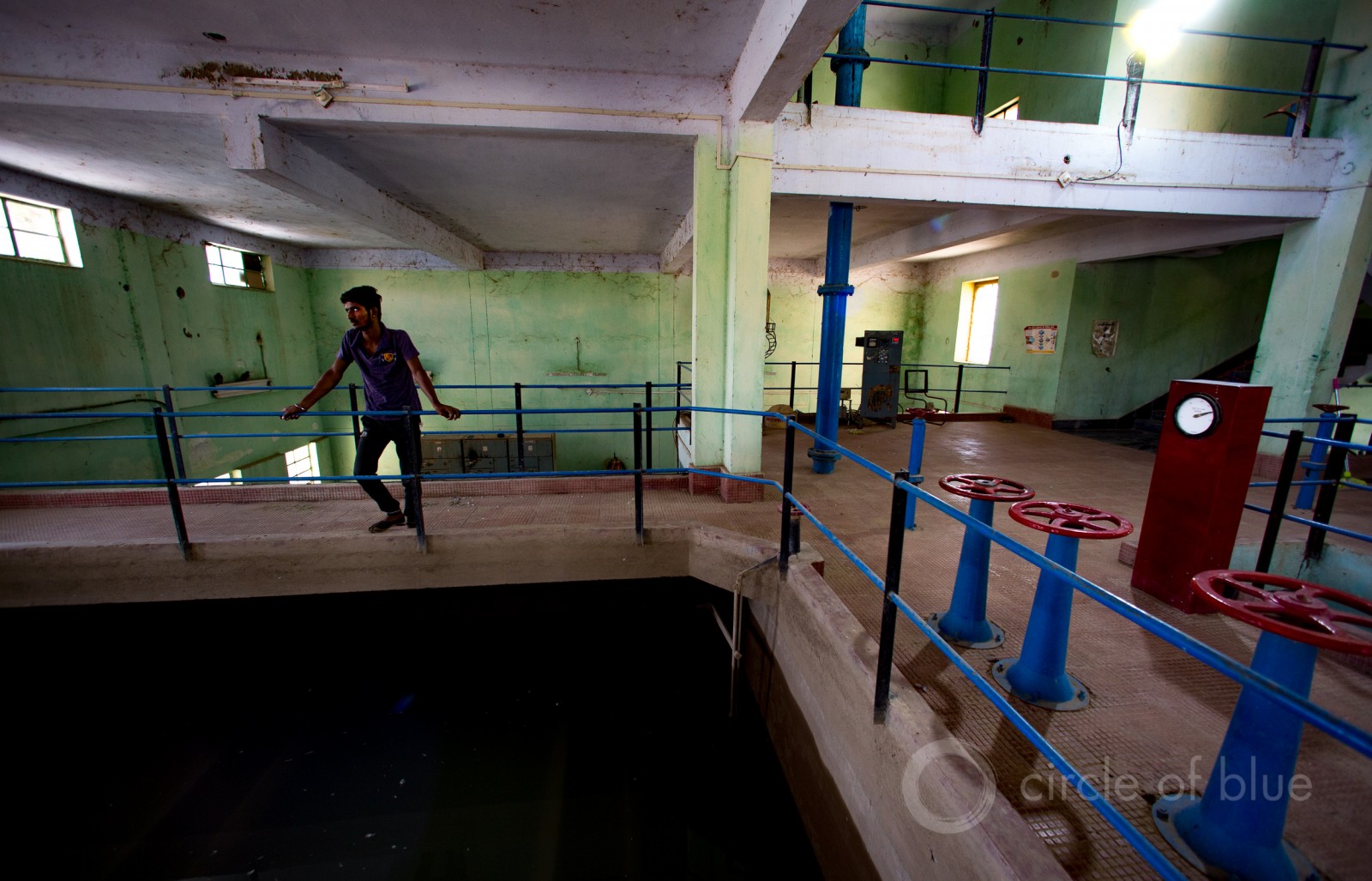
Many cities in India rely on precariously low groundwater supplies to fill their treatment plants and water systems like this one in Jaisalmer. © J. Carl Ganter / Circle of Blue
J. Carl Ganter and Jennifer Möller-Gulland contributed to this report from Delhi and Bengaluru.
Circle of Blue’s senior editor and chief correspondent based in Traverse City, Michigan. He has reported on the contest for energy, food, and water in the era of climate change from six continents. Contact
Keith Schneider
© 2023 Circle of Blue – all rights reserved
Terms of Service | Privacy Policy

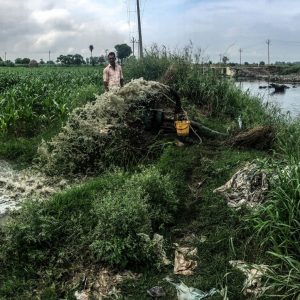 India faces “worst water crisis” in history Groundwater Scarcity, Pollution...
India faces “worst water crisis” in history Groundwater Scarcity, Pollution...This site uses cookies. By continuing to browse the site, you are agreeing to our use of cookies.
OKLearn moreWe may request cookies to be set on your device. We use cookies to let us know when you visit our websites, how you interact with us, to enrich your user experience, and to customize your relationship with our website.
Click on the different category headings to find out more. You can also change some of your preferences. Note that blocking some types of cookies may impact your experience on our websites and the services we are able to offer.
These cookies are strictly necessary to provide you with services available through our website and to use some of its features.
Because these cookies are strictly necessary to deliver the website, refusing them will have impact how our site functions. You always can block or delete cookies by changing your browser settings and force blocking all cookies on this website. But this will always prompt you to accept/refuse cookies when revisiting our site.
We fully respect if you want to refuse cookies but to avoid asking you again and again kindly allow us to store a cookie for that. You are free to opt out any time or opt in for other cookies to get a better experience. If you refuse cookies we will remove all set cookies in our domain.
We provide you with a list of stored cookies on your computer in our domain so you can check what we stored. Due to security reasons we are not able to show or modify cookies from other domains. You can check these in your browser security settings.
We also use different external services like Google Webfonts, Google Maps, and external Video providers. Since these providers may collect personal data like your IP address we allow you to block them here. Please be aware that this might heavily reduce the functionality and appearance of our site. Changes will take effect once you reload the page.
Google Webfont Settings:
Google Map Settings:
Google reCaptcha Settings:
Vimeo and Youtube video embeds:
